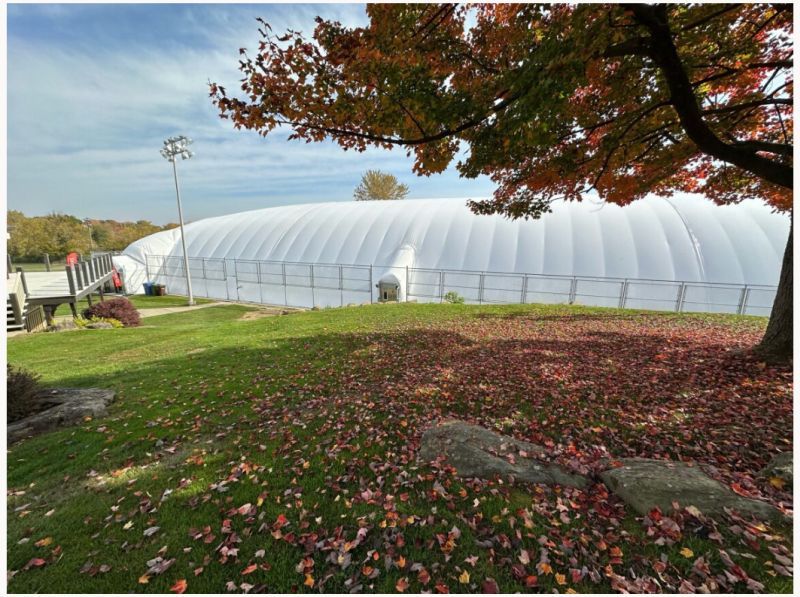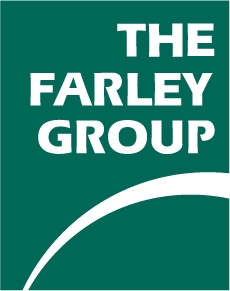
We collect basic website visitor information on this website and store it in cookies. We also utilize Google Analytics to track page view information to assist us in improving our website.

How many times have you frantically checked (and re-checked) the forecast before a game, hoping the rain would hold off or the heatwave would break?
Today, managing outdoor sports is becoming more and more like predicting the weather: a tricky and often unreliable task.
Climate change is forcing society to adapt, and sports are no exception. It’s time to talk about solutions.
Here’s why air-supported domes, like those from The Farley Group, can keep the game going even with extreme, unpredictable weather conditions.
As climate chaos becomes the new norm, sports leagues and businesses worldwide are grappling with the consequences. The rules of the game are evolving and bringing new challenges with them.
Take tennis, for instance. The sport demands prolonged exposure to scorching courts, leaving players vulnerable to heat-related illnesses as temperatures soar. The sweltering heat radiating off hard surfaces only compounds the issue, risking not just the well-being of players but also that of ball boys and girls and spectators.
With over 80% of tennis tournaments staged outdoors, sometimes with matches that stretch for hours, extreme heat poses an existential threat. Recognizing this danger, the US Open has implemented an extreme heat policy, allowing for breaks and match suspensions during temperature spikes.
Soccer has also felt the heat. You’ll remember that the 2022 FIFA World Cup in Qatar was rescheduled from its traditional June-July slot to November-December to avoid scorching summer temperatures that could jeopardize players and fans alike. It’d be nice to think that was just a Qatar problem, but it wasn't—local and multinational organizations alike, from Major League Soccer (MLS) to Alberta Soccer in Canada, have also had to set new safety thresholds to deal with hot weather events and pollution peaks.
Speaking of pollution, we can’t forget how many of us have had to cancel games because of the poor air quality caused by record-breaking wildfires across many parts of Canada and the United States. The shifting climate is a major contributor to wildfires being as bad (and as frequent) as they are.
The bottom line is that increasingly frequent extreme weather events are becoming the norm.
An analysis by Climate Central revealed a concerning trend: 198 US cities have experienced a surge in days with heat index temperatures of 90°F or higher over the past four decades.
Extremely rainy days have also become 18% more common since pre-industrial times, with projections indicating a potential 65% increase if global warming hits 2°C.
It’s not good news for those of us who are invested—not only financially, but as a way of life—in outdoor sports. And it demands a massive, strategic overhaul in how sports facilities are planned and managed.
What if you could take climate uncertainty out of the equation?
Imagine not having to cancel another game or reschedule an event because of weather woes.
This isn't just wishful thinking. With the right kind of setup, it's possible.
An air-supported dome is like a trusty umbrella that never fails. Here’s how our Farley domes (often called “bubbles” in the case of tennis domes) are safe spots for sports no matter what the sky throws down.
Imagine a giant, inflatable bubble that you can play sports inside. That's pretty much what Farley domes are, but with some extra tough skin.
Made from layers of strong, UV-resistant fabric, our domes can stand up to heavy winds, beating rain, extreme heat, and loads of snow without as much as a flinch. They're held down by heavy cables and a solid anchoring system that makes sure the dome stays put, even on super windy days. Rain or shine, the games go on.
The best part? Inside the dome, there are no poles or beams in the way, so you’ve got all the space you need to kick, run, or swing without bumping into anything. It’s a completely clear-span structure.
Inside of a dome, the temperature and humidity are always just right. Thanks to advanced climate control systems, the temperature and humidity inside our domes are maintained at optimal levels for athletic performance and spectator comfort.
On a hot, humid day, the air inside the dome is cool and fresh, creating a comfy oasis from the sweltering heat. During colder months, the dome is warm and inviting, shielding you from the biting cold outside.
We know athletes perform at their best when conditions are consistent. The controlled climate reduces the risk of heat-related stress and cold-induced injuries so that players can focus on the game without worrying about the weather. This consistent and comfortable environment is also better for spectators (soccer parents, that means you!)
For private clubs and businesses, the promise of a pleasant playing experience is also a massive competitive advantage. People are more likely to join (and actually attend) when they know they'll be playing in comfort, regardless of the weather conditions outside. This reliability can help you maintain and even grow your member base, increase rentals, and improve event participation.
Our domes have a smart ventilation system that keeps the air fresh and the temperature steady. Whether it's a hot, sticky day or a cool evening, the air inside the dome is just perfect for sports, ensuring that athletes and fans are comfortable, and the game is always on.
Seasonal domes are installed over outdoor courts or fields temporarily, usually in the fall or winter, and then taken down when the weather is favourable. Permanent domes, on the other hand, stay put all year long.
For clubs, municipalities, and academic institutions looking to weatherproof their outdoor spaces without sacrificing sunny days on the field, a seasonal dome is a practical, flexible solution.
Traditionally, most facilities with a seasonal dome would put it up in the fall and take down the dome come spring. This allows sports like soccer and tennis to continue indoors during the colder months, then resume outdoor play in the spring.
But if the weather is particularly unforgiving one year—say, you’re deluged with buckets of spring showers just won’t end—you can leave the dome up well into the summer.
However, if you’re faced with a sweltering summer, you can put up the dome in the middle of the summer to give players relief.
The point is, with a seasonal dome, you don’t have to ‘commit’ to converting outdoor facilities to indoor ones. You have the freedom to decide for yourself when it’s time to change course.
Of course, for areas or sports that require year-round consistency, permanent domes are the answer. These structures remain up all year, providing a consistent venue that doesn't depend on the weather.
Debating between a permanent dome and a seasonal dome? Get in touch. We’ll help you figure out which kind of dome is right for you.
There’s no denying that climate is changing the way we plan and play outdoor sports. From extreme heat and poor air quality to unexpected rainfalls and cold snaps, the challenges are real, and they're here now.
But these challenges don't have to mean game over for your sports events.
Air-supported domes offer a robust, smart solution that keeps the weather out and the games going.
Domes not only protect against rain, sun, snow, and pollution at only a small fraction of the cost of traditional, brick-and-mortar indoor sports facilities. They're quick to install over existing fields and courts, providing an affordable way to transform outdoor venues into year-round facilities. And with powerful air exchange systems, Farley domes provide a controlled, healthy environment that lets athletes perform at their best and spectators relax, no matter the season.
We encourage you to explore more about how The Farley Group’s domes can benefit your sports programs and events. Whether you're looking to upgrade existing facilities or build new ones, consider how a Farley dome could be your next game-winning strategy. Contact us to find out how you can turn your sports venue into a weatherproof, year-round destination for athletes and fans alike.
